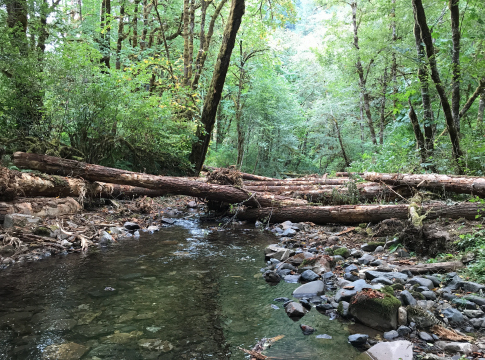Related News
Related News
-
Sustainability Snapshot - Celebrating Energy Efficiency Projects in the Community
Sustainability Snapshops highlight impactful projects completed by EWEB's Customer Solutions department, as a way to celebrate the meaningful work happening behind the scenes.
Find Out More -
EWEB Sets 2026 Budget and Rates, Advances Evaluation of McKenzie Valley Service Territory Realignment
Taken together, the 2026 budget and rate adjustments and the territory-realignment evaluation reflect EWEB’s dedication to responsible financial stewardship, modern, resilient utility infrastructure, and thoughtful planning for the future.
Find Out More -
EWEB secures $2.5 billion of reliable, affordable, carbon-free energy for customers
The new contract with EWEB’s largest energy supplier, the Bonneville Power Administration, forms the foundation of a diverse energy portfolio.
Find Out More -
EWEB Hometown Heroes compete internationally
Out of 290 teams from 14 different countries, EWEB's Lineman Rodeo team places in the top third of competitors.
Find Out More -
EWEB Hosts Annual Spill Drill to Protect McKenzie River
EWEB led emergency responders in its annual “spill drill” on the McKenzie River on Wednesday, Oct. 15, at the Trail Bridge Campground.
Find Out More -
A day in the life: Monitoring water quality throughout the McKenzie Watershed
Follow Senior Environmental Specialist David Donahue as he collects water quality samples from throughout the watershed as part of EWEB's early warning system for threats to Eugene's drinking water.
Find Out More -
EWEB Partners with Eugene School District 4J to Celebrate New Kennedy Middle School Emergency Water Station Site
Hundreds of attendees practiced filling up water containers at Saturday's demonstration event.
Find Out More -
Quartz Creek: Setting the Stage for Floodplain Restoration
The project resets the floodplain along 1.8 miles of a formerly channelized creek to improve water quality, fish habitat and natural disaster resiliency.
Find Out More -
Pure Water Partners: 5 Years of Regeneration
As EWEB and the Pure Water Partners observe the fifth anniversary of the Holiday Farm Fire, we celebrate major milestones in the watershed's recovery and check back in with PWP landowners who still have a lot of work ahead as they continue to rebuild their lives.
Find Out More -
You can’t predict the next disaster, but you can prepare
The earthquake lasted less than a minute. But now the power’s out. The tap runs dry. Cell service is spotty. Would you be ready?
Find Out More -
EWEB completes helicopter installation of salmon habitat features
EWEB adds downed trees and 2,000 tons of gravel to the Uupper McKenzie River below Tamolitch Falls to improve spawning habitat.
Find Out More -
Court rules in favor of EWEB in Carmen-Smith litigation
The U.S. District Court in Eugene has granted EWEB's motion to dismiss a lawsuit brought under the Endangered Species Act pertaining to fish passage at EWEB’s Trail Bridge Dam. The favorable ruling clears the way for EWEB to continue advancing towards implementation of permanent fish passage at the dam.
Find Out More -
EWEB proposes modified plan for permanent fish passage at Trail Bridge Dam
After eight months of extensive collaboration and analysis with scientific experts at two federal regulatory agencies, EWEB is proposing an improved plan to build permanent fish passage facilities at Trail Bridge Dam on the McKenzie River.
Find Out More -
Sustainability Snapshot - Ideal Steel July 2025
Our second Sustainability Snapshop highlights a project where EWEB helped a local industrial warehouse upgrade over 1,000 flourescent lights to new efficient LEDs.
Find Out More -
EWEB Celebrates Operators on the 75th Anniversary of the Hayden Bridge Filtration Plant
Learn more about the Water Treatment Plant Operators who have kept the Hayden Bridge Filtration Plant running for the last 75 years.
Find Out More - Show More
Deer Creek Habitat Enhancement Project Underway
August 24, 2020

EWEB, McKenzie Watershed Council and the Willamette National Forest are collaboratively working on the project, which involves relocating a portion of 115 kV transmission line.
In the late 1950s and early 1960s when EWEB's Carmen-Smith Hydroelectric Project was originally built 70 miles east of Eugene on the upper McKenzie River, the area was isolated and much of the surrounding land was undeveloped national forest with limited access. Bringing power from the generator to Eugene homes and businesses required construction of an 18-mile transmission line to Cougar Reservoir, where it connects to the Bonneville Power Administration's system.
That transmission system, still in use today, runs primarily along hillsides and ridges. But in the lower Deer Creek valley, the high voltage powerlines intersect approximately three quarters of a mile of floodplain which, under historically natural conditions, was prime habitat for fish and other wildlife.
Deer Creek is the largest tributary to the McKenzie River and journeys approximately eight miles from its headwaters to its confluence with the McKenzie, currently Eugene's sole source of drinking water. Past land management practices, such as riparian logging, had impaired the watershed and contributed to poor habitat conditions in lower Deer Creek.
"Unfortunately, when the transmission line was routed through the Deer Creek floodplain around 60 years ago, it contributed to degradation of the riparian zone and habitat," says EWEB Generation Manager Mike McCann. "By Federal law, EWEB is required to manage vegetation below the transmission lines, so periodically we have to go in and cut all of the willows and alder and other species that provide shade to the stream, further impacting habitat."
Several years ago, the U.S. Forest Service and the McKenzie Watershed Council partnered to implement a restoration project on the lower portion of Deer Creek. Constraining berms were removed, and large wood was added to create deep pools for fish cover, slower water for resting, and sorted gravels for spawning beds. Initial results were positive, and during 2017, McKenzie Watershed Council reported that spring Chinook Salmon were observed spawning in Deer Creek for the first time since the early 90s.
But the restoration project was limited by EWEB's transmission lines. "It wasn't as effective as we would have liked," says EWEB Drinking Water Source Protection Supervisor Karl Morgenstern. "The powerlines wouldn't let us restore the greater floodplain and you really need to have the scale to make this stuff work."
Then, in the early 2000s, when EWEB began the relicensing process for Carmen-Smith, the Forest Service requested the transmission lines be moved from the Deer Creek riparian zone, if possible.
"That's when EWEB first made the commitment to move the lines to the adjacent hillside," says Mike McCann. "Moving the transmission lines is going to let us open that whole floodplain up for restoration."
This summer, land was cleared for the new hillside transmission corridor. Trees that were removed will be used in Phase 2 of the Deer Creek restoration project to create additional habitat for threatened bull trout and spring Chinook salmon, as well as rainbow and cutthroat trout and beaver.
In addition to restoring and enhancing habitat for native fish and wildlife, the Deer Creek project is key to EWEB's drinking water source protection and climate resiliency work.
"One of the things that came out of this project was a strategy for the future given what precipitation patterns and snowpack have been recently," says Karl Morgenstern. "It makes sense for us to do work in the watershed that keeps as much water on the landscape as possible."
Floodplain restoration helps spread water across the landscape, allowing it to soak in and release later in the summer.
Transmission line relocation is scheduled to begin mid-2021 and will be performed by EWEB electric crews. First the new towers will be installed and the transmission line rerouted, allowing EWEB to remove the existing structures. Once the transmission lines are removed, the floodplain restoration work will continue in the Deer Creek floodplain.
Photo Credit: McKenzie Watershed Council

